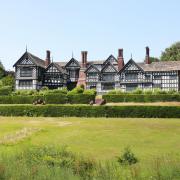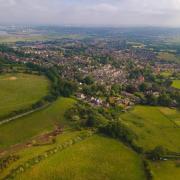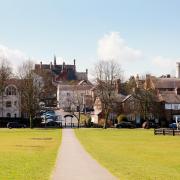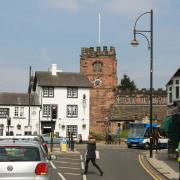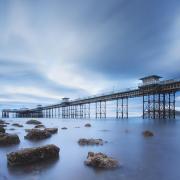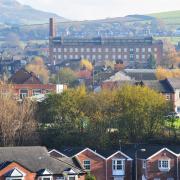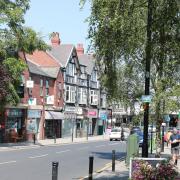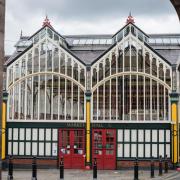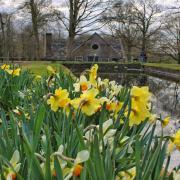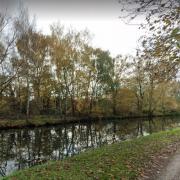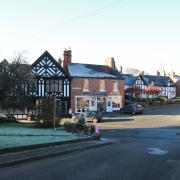Writer Stephen Roberts, a lifelong enthusiast of the Lovell telescope, pays tribute to Cheshire’s most iconic landmark to celebrate its 60th anniversary

When I was a nipper I dreamt of the heavens, studying star charts and poring over HG Wells’ sci-fi. By the time I was ‘compos mentis’ I was aware of other worlds and immersed in the Space Race of the 60s.
When the world’s largest steerable radio-telescope began working at the Jodrell Observatory, I was just six months old. It was October 1957; 60 years ago. This instrument, with its 250 foot (76.2 metre) diameter parabolic bowl, consisting of 7,100 welded, 2mm-thick, steel sheets, was supported by a structural steel space-frame.
Jodrell Bank is based at Lower Withington in Cheshire, ‘Jodrell Bank’ being a local place name. The telescope’s designer, Sir Bernard Lovell, established the Jodrell facility in 1945, and then, in ’57, completed the telescope project in time to track the first man-made satellite, ‘Sputnik’, launched by the Russians a week before. There is an intriguing possibility that, but for ‘Sputnik’, the project might have been halted due to escalating costs. Suddenly, watching the skies was important. In the Cold War world of the 50s there was probably nothing more vital than keeping tabs on what the Soviets were up to. That’s exactly what the Mark I did for the three months that ‘Sputnik’ strutted its stuff. From 1958 the telescope tracked US attempts to overtake the Russians with their own satellites and ultimately Moon rockets.
What we’ve been talking about is the Mark I telescope, the largest in the world at the time. There had already been significant preliminaries. The telescope’s first movement, just one inch, occurred in February 1957. Its ‘first light’ (first use) came in August, however, its first ‘proper’ use, from the control room, was on October 9th, using a purpose-built analogue computer (those were the days). The October date was the one, as that was very much ‘job finished’.

The Lovell Telescope is still in use; its power strengthened in 2001, giving it a fourfold increase in resolution power. It’s also been Grade I Listed since 1988. It is ranked third biggest today among steerable radio telescopes, the ‘daddy’ and ‘mummy’ being in the USA and Germany. Jodrell Bank also has its own ‘baby’ radio telescope, the Mark II, completed in 1964.
The Lovell Telescope has been a familiar feature of the Cheshire landscape for six decades, scouring the depths of space to enhance our understanding of what lies out there. That huge white bowl can be seen from miles away, gathering incoming radio waves, as we marvel at its size and aesthetics.
In 2011 a Discovery Centre opened at the site to provide visitor amenities. The vision is to, ‘work to inspire the scientists of the future by engaging them with the scientific research carried out at Jodrell Bank and with the stories of the creation of the Observatory and its ground-breaking science.’
Put simply, this is the place to come to explore the wonders of the universe (which are not so simple). It’s also possible to learn more about the workings of that giant telescope. There are two pavilions containing a myriad of things to see and do, and a third which acts as an auditorium. The site itself is about 35 acres, so if you get hemmed in by the heavens, you can always sample the great outdoors by getting out in the gardens. There are around 3,000 trees and shrubs, which form the Lovell Tree Collection, begun by Sir Bernard himself in 1972. If you’re beginning to feel weightless by this time, head for the Planet Pavilion Café, overlooking the Mark I. Be reassured, it’s proper food (not space food). There’s also a shop. As a throwback to childhood I quite fancy tackling the ‘Apollo Lunar Module, 3D Model Making Kit’.

Jodrell Bank has been in the news recently, with six additional structures listed, including the Mark II telescope. Professor Tim O’Brien, Associate Director of the Centre, said,: ‘We are delighted and very proud that the pivotal role played by Jodrell Bank in the development of radio astronomy has been celebrated with these new listings.’
Professor Teresa Anderson, Director of the Discovery Centre, added: ‘Jodrell Bank has welcomed millions of visitors, drawn by its landmark scientific structures. Science is a hugely important part of our cultural heritage and we are very pleased to see that recognised and protected with these new designations.’
Notes: English astronomer Sir (Alfred Charles) Bernard Lovell (1913-2012) was Professor of Radio Astronomy at Manchester University and director of Jodrell Bank experimental station. It is said that Bernard Quatermass, of the 1950s sci-fi serial, was named after Lovell.
10 ‘FACTS’ ABOUT JODRELL BANK AND THE MARK I TELESCOPE
Telescope mass – 3200 tonnes and Bowl mass – 1500 tonnes.
Bowl diameter – 76.2 metres and Bowl surface area – 5270 square metres.
Amount of paint for 3 coats – no less than 5300 litres!
Max height above ground – 89 metres, around twice the height of our tallest castle.
Bearings enabling the telescope to pivot were first used for Royal Naval gun turrets.
Winner (2006) of UK’s greatest ‘unsung landmark’.
Mobile phone use is forbidden as the Mark I is so sensitive.
The staff microwave is shielded inside a metal box for the same reason!
One of the ‘Doctor Who’ regenerations occurred at Jodrell Bank.
In ‘Hitchhiker’s Guide to the Galaxy’, Jodrell Bank scientists miss an alien invasion after making a cuppa!




